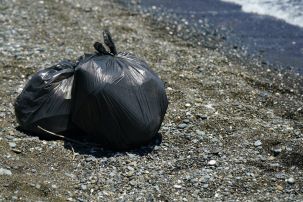Lesson summary
Students will consider why and how people litter, then develop a campaign to convince litterbugs to refuse, reduce, reuse and recycle. They will consider the environmental and social impacts of littering.
Learning intentions:
Students will...
- understand the social and environmental implications of littering
- begin to take responsibility for unwanted food packaging
- will rethink the concept of why people litter and how they can change litterbugs value set.
Success criteria:
Students can...
- think critically about how other people might think about and perceive litter
- be persuasive when communicating messages about not littering.
Lesson guides and printables
Lesson details
Curriculum mapping
Australian Curriculum content descriptions:
Year 9 English:
- Create imaginative, informative and persuasive texts that present a point of view and advance or illustrate arguments, including texts that integrate visual, print and/or audio features (ACELY1746)
- Plan, rehearse and deliver presentations, selecting and sequencing appropriate content and multimodal elements for aesthetic and playful purposes (ACELY1741)
- Use interaction skills to present and discuss an idea and to influence and engage an audience by selecting persuasive language, varying voice tone, pitch, and pace, and using elements such as music and sound effects (ACELY1811)
Year 10 English:
- Create sustained texts, including texts that combine specific digital or media content, for imaginative, informative, or persuasive purposes that reflect upon challenging and complex issues (ACELY1756)
- Identify and explore the purposes and effects of different text structures and language features of spoken texts, and use this knowledge to create purposeful texts that inform, persuade and engage (ACELY1750)
- Plan, rehearse and deliver presentations, selecting and sequencing appropriate content and multimodal elements to influence a course of action (ACELY1751)
Syllabus outcomes: EN5-2A, EN5-1A, EN5-3B.
General capabilities: Critical and creative thinking.
Cross-curriculum priority: Sustainability OI.3, OI.8.
Time required: 60+ mins.
Resources required
- Access to device with editing software
- Poster making materials
- Various props as required
Skills
This lesson is designed to build students’ competencies in the following skills:
- Communication
- Critical thinking
- Problem solving
Additional info
Following this lesson plan is an ideal way for your school to take part in Schools Clean Up Day or a Clean Up on any day of the year. You’ll be joining thousands of amazing teachers in making a difference and creating positive environmental change.


Welcome back!
Don't have an account yet?
Log in with:
By signing up to Cool.org you consent and agree to Cool's privacy policy to
store, manage and process your personal information. To read more, please see
our privacy policy here(Opens in new tab).
Create your free Cool.org account.
Many of our resources are free, with an option to upgrade to Cool+ for premium content.
Already have an account?
Sign up with:
By signing up to Cool.org you consent and agree to Cool's privacy policy to
store, manage and process your personal information. To read more, please see
our privacy policy here(Opens in new tab).